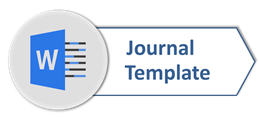A Study on Flouting Maxims in Divergent Novel
Abstract
Full Text:
PDFReferences
Brown, Gillian, Goerge Yule. 1983. Discourse Analysis. Cambridge: Cambridge University Press.
Cook, Guy. 1989. Discourse. Oxford: University Press.
Cutting, Joan. 2002. Pragmatics and Discourse, a Resource Book for Student. New York: Routledge.
Cruse, A. 2000. Meaning in Language:An Introduction to Semantics and Pragmatics. Cambridge: Cambridge University Press.
Finch, Geoffrey. 1988. How to Study Linguistics. London: Macmillan Press Ltd.
Finegan, E. 2004. Language its structure and Use Fourth Edition. Massachusetts: Thomson Wadsworth.
Goody, E. 1996. Questions and Politeness. Cambridge: Cambridge University Press.
Grice, H. Paul. 1975. Logic and Conversation. New York: Oxford University Press.
Grice, H. Paul. 2004. Conversational Implicature;Cooperative Principle Online :http://www.art scl.wustl.edu/MindDict/grice.html.
Grundy, P. 2000. Doing pragmatics. (Second Edition). New York: Oxford Press.
Leech, G. 1983. Principle of Pragmatics. London: Longman
Levinson, S C. 1983. Pragmatics. Cambridge: Cambridge University Press
Markkanen, Raija. 1997. Hedging and Discourse: approaches to the Analysis of a Pragmatics Phenomenon in Academic Texts. New York: de Gruyter.
Nugroho, A. 2002. “The Contradiction of Certainty and Uncertainty in Hedging and Its Implications to Language Teaching” in Journal: A biannual publication on the study of language and literature (vol4/No. 1/ June 2002 p 17-22). Surabaya: Petra Christian University
Roth, Veronica.2011. Divergent. New York: Katherine Tegan Books.
Thomas, J. (1995). Meaning in Interaction: an Introduction to Pragmatics. Harlow: Pearson Education
Yule, G. 1985. The Study of Language: An introduction. Cambridge: Cambridge University Press.
Yule, G. 1996. Pragmatics. New York: Oxford University Press.
Widdowson, H. G. 2007. Discourse Analysis. Oxford: Oxford University Press.
DOI: https://doi.org/10.33365/ts.v14i1.84
Refbacks
- There are currently no refbacks.
Copyright (c) 2018 TEKNOSASTIK
Teknosastik: Jurnal Bahasa dan Sastra
Publisher: Universitas Teknokrat Indonesia
Address: Zainal Abidin Pagaralam Street 9-11, Bandar Lampung, Indonesia
Website: https://ejurnal.teknokrat.ac.id/index.php/teknosastik/index

Creative Commons Attribution-ShareAlike 4.0 International License






